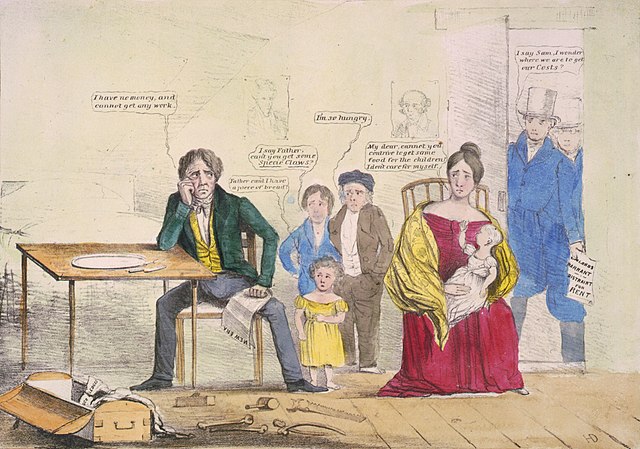The Panic of 1837 was a financial crisis in the United States that began a major depression, which lasted until the mid-1840s. Profits, prices, and wages dropped, westward expansion was stalled, unemployment rose, and pessimism abounded.
Whig cartoon showing the effects of unemployment on a family that has portraits of Democratic Presidents Andrew Jackson and Martin Van Buren on the wall
An 1837 caricature blames Andrew Jackson for hard times.
The modern balaam and his ass, an 1837 caricature placing the blame for the Panic of 1837 and the perilous state of the banking system on outgoing President Andrew Jackson, shown riding a donkey, while President Martin Van Buren comments approvingly
Hard times token, late 1830s; privately minted, used in place of the one-cent coin during currency shortage; inscription reads "I Take the Responsibility", showing Andrew Jackson holding a drawn sword and a coin bag emerging from a strongbox.
A financial crisis is any of a broad variety of situations in which some financial assets suddenly lose a large part of their nominal value. In the 19th and early 20th centuries, many financial crises were associated with banking panics, and many recessions coincided with these panics. Other situations that are often called financial crises include stock market crashes and the bursting of other financial bubbles, currency crises, and sovereign defaults. Financial crises directly result in a loss of paper wealth but do not necessarily result in significant changes in the real economy.
Black Friday, 9 May 1873, Vienna Stock Exchange. The Panic of 1873 and Long Depression followed.
Declining consumer spending
The Roman denarius was debased over time.
Philip II of Spain defaulted four times on Spain's debt.








